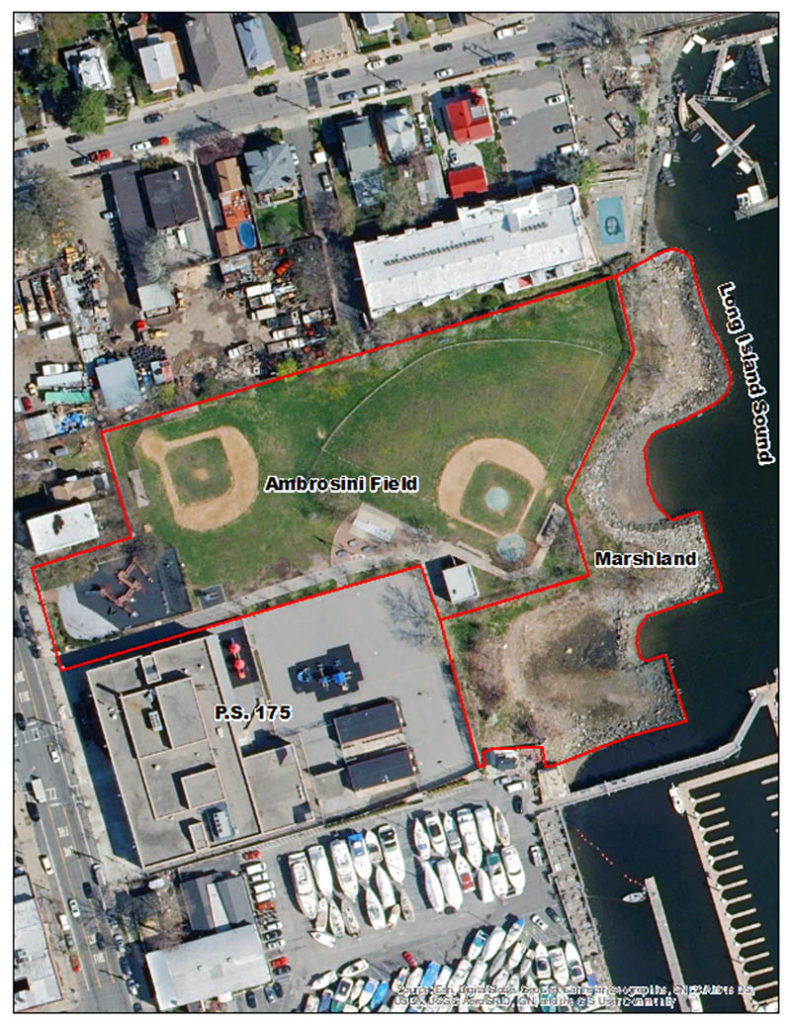One of the five sites that CIOR has studied for its potential in oyster reef restoration is a wetlands area behind City Island’s local school, P.S. 175, which belongs to the New York City Department of Parks & Recreation.

One of the important goals of this project is to educate the community in the importance of shoreline protection. The CIOR Living Shoreline serves as an outdoor educational center for science teachers and students to study various aspects of marine ecology. CIOR partners with P.S. 175, the NYC Parks Department, the NYC Board of Education, the Billion Oyster Project, Cornell Cooperative Extension’s Marine Center, and the Long Island Sound Study to offer hands-on educational programs about oysters and the marine environment. Measuring oysters, identifying biodiversity, monitoring water-quality parameters, creating “spat catchers,” and studying Japanese knotweed are some of the innovative ways that have been used to teach students at the Living Shoreline.
Since 2020 CIOR has been engaged in removing debris and invasive, non-native plants (Japanese knotweed, mugwort, and porcelain berry) and encouraging the growth of native vegetation, with the support of the Parks Department, the New York Restoration Project, and volunteers from the City Island community, including the City Island Scouts Troop 211.
Thanks to the support of grants from the Long Island Sound Stewardship Fund and the Richard Lounsbery Foundation, CIOR has engaged landscape architect Filomena Riganti to prepare a design for this area, including the installation of pilot oyster reefs, the creation of walking paths, and the establishment of an outdoor science learning center, and to obtain appropriate permits from the NYS Department of Environmental Conservation (DEC) and the U.S. Army Corps of Engineers (USACE).
Visitors will have access to the shoreline, where oyster cage monitoring stations will be accessible for study and where oyster reefs will be located further out in the water. The plan is to provide a hands-on educational experience demonstrating the importance of coastal wetlands and marine ecology. The creation of a space for students and residents of New York City to learn about this important ecosystem is an important part of protecting and ensuring marine environments into the future.